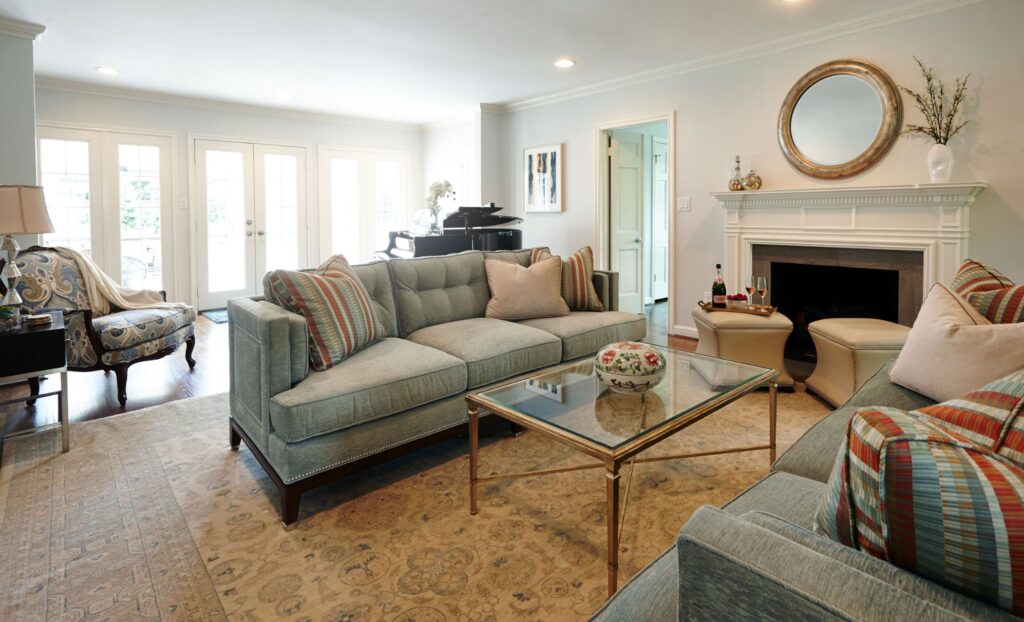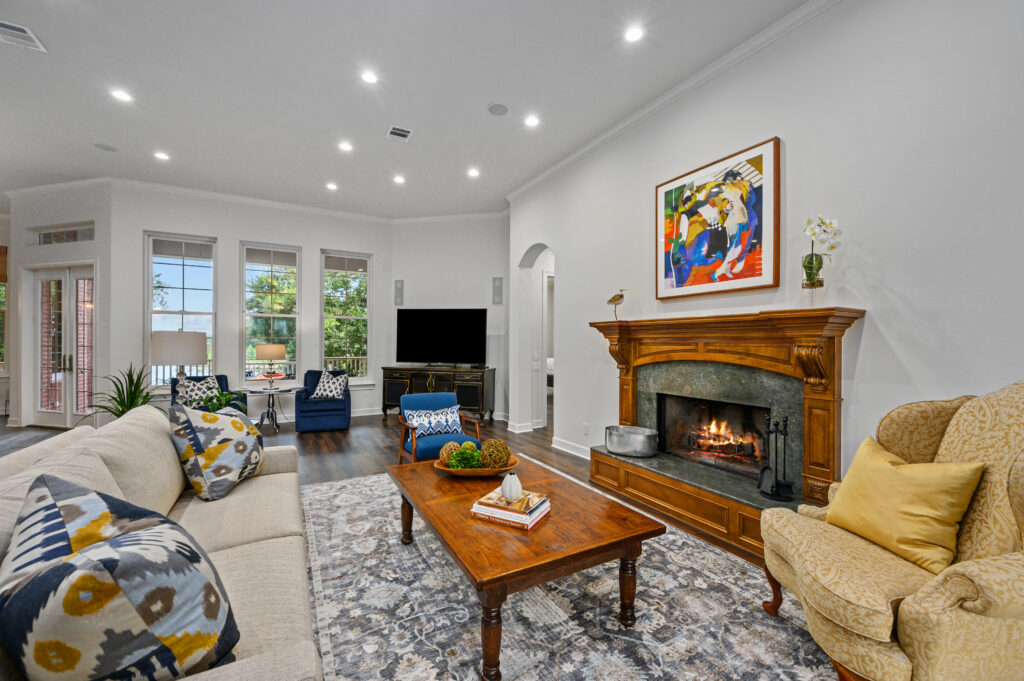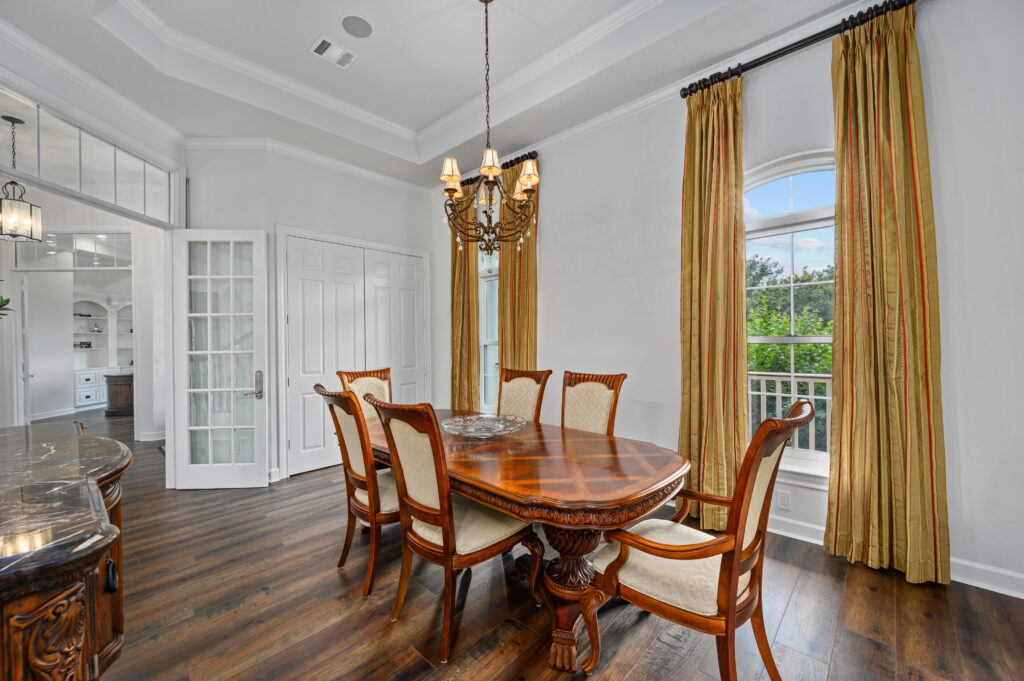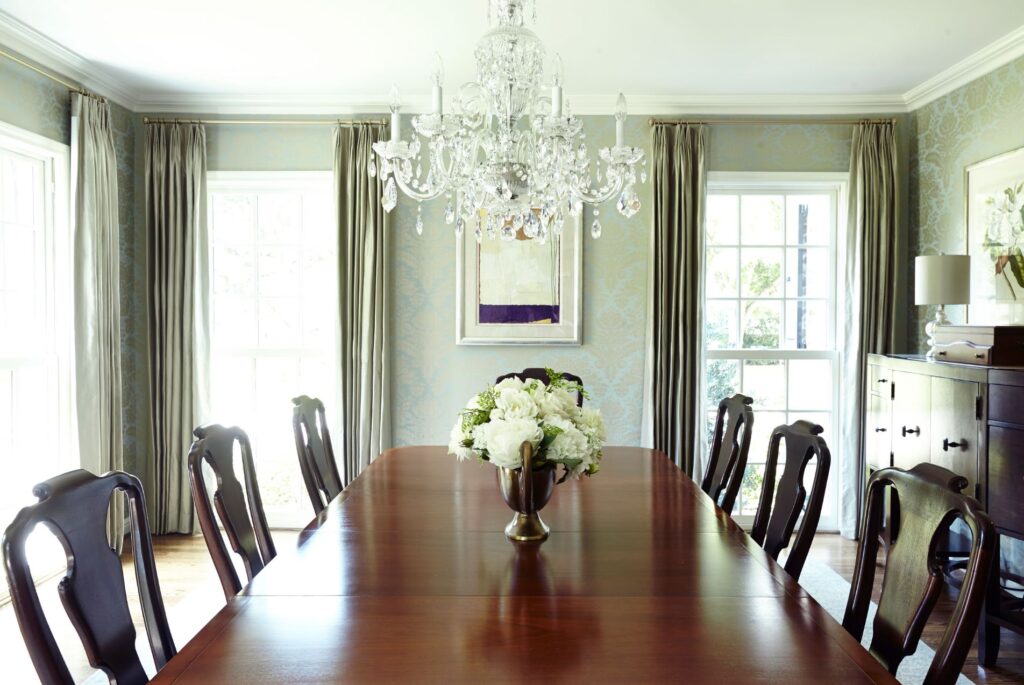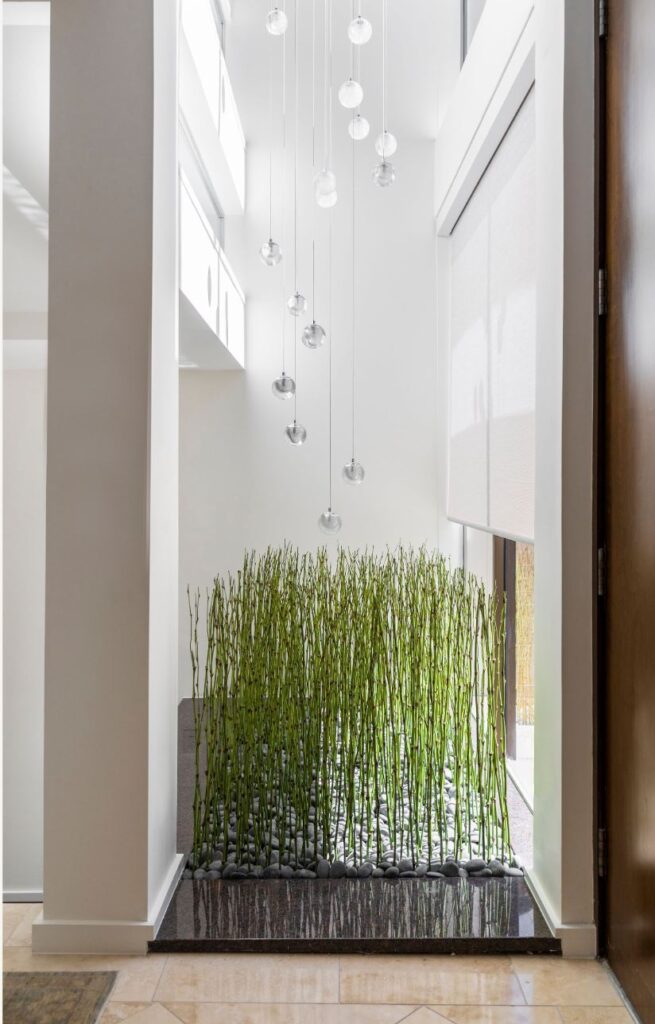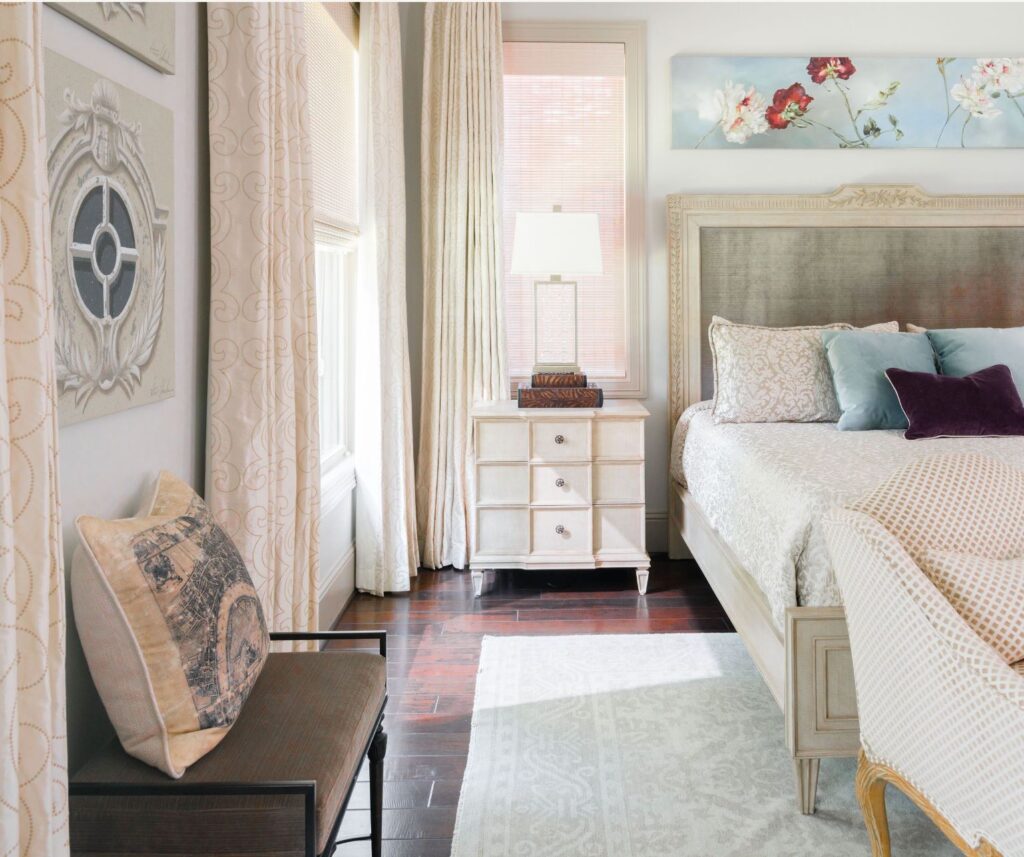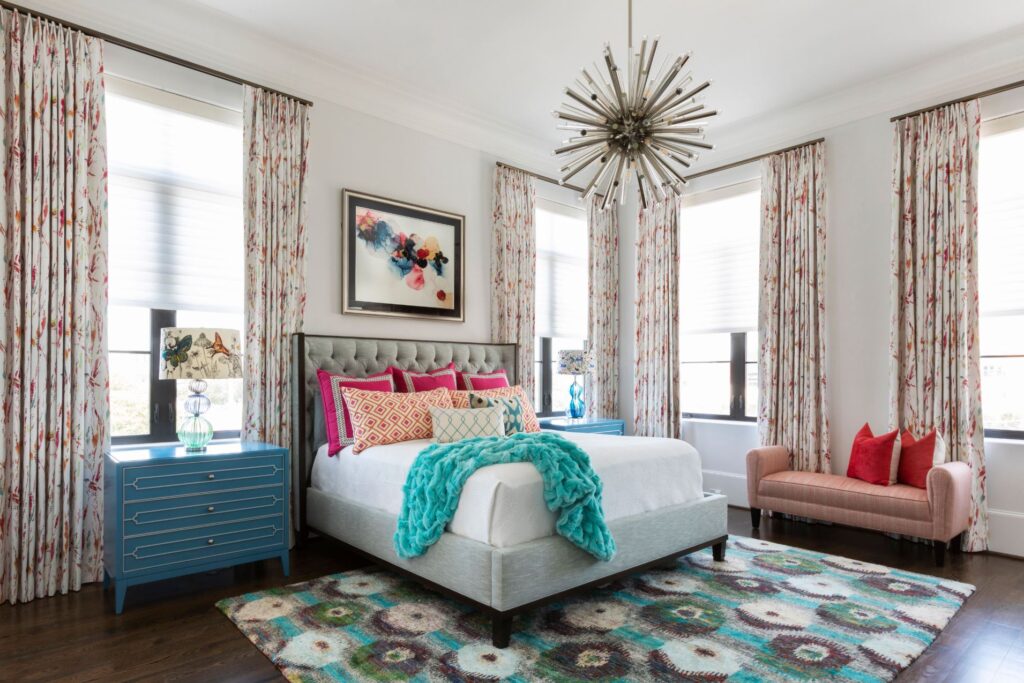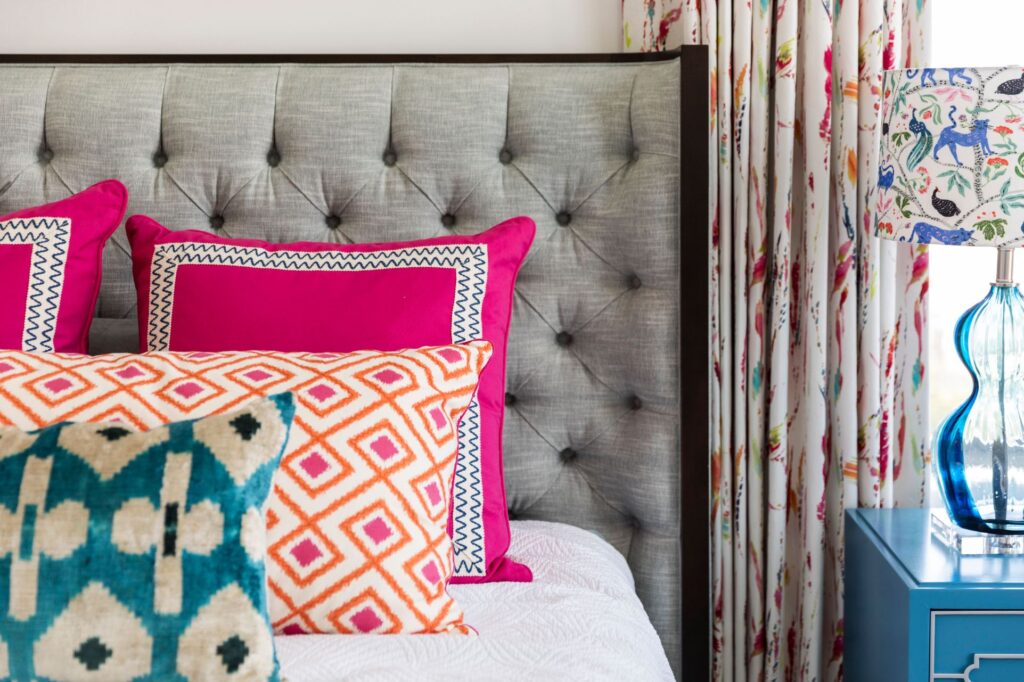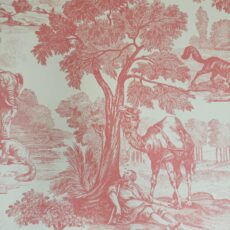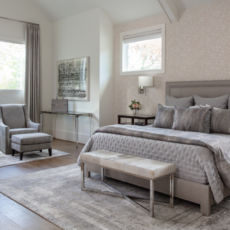There has recently been a resurgence of interest in traditional design, including classic fabric designs. While these never really go out of style, in my 23 years of designing, I definitely have seen lulls in orders of damasks, toiles and passementerie. A little back story here: one of the best parts of having majored in languages in college (French and Italian) is that I can pronounce and spell all of these elegant words used in the world of design and décor! So how does this tie into the return of traditional interior design?
In case you don’t speak French or Italian, passementerie is a term for decorative trim like fringe and tassels, historically used on furniture, clothing and uniforms. When I started my business in 2000, I created a specific Quickbooks code for trims and notions. Notions is another sewing term that means items used in sewing such as zippers, snaps, etc. We used notions when creating pillows in particular and used a lot of trim in those days. I designed and created a lot of decorative fabric projects such as pillows, table covers, placemats and napkins. Many of these included both trims and notions so I specified those costs on each invoice. We even had a company that would add plastic to the front and foam to the back of fabrics and we could have placemats stamped out so that they matched your table cloth or cushions or we could use nearly any fabric you wanted. Those turned out nicely and were fun. Families loved them because the coatings were completely washable and great for children.
Our window treatments tended to be a bit involved back in the day as well. Lots of clients wanted swags, valances and cornices. They were quite intriguing to design and allowed us to really add interest with the passementerie! You remember that term, right?
I remember at one point, I had a client who liked tropical design. We found some wonderful, colorful fabrics featuring palm leaves, tropical botanicals and florals. She wanted a very long and ornate valance with swags and draperies to span the large picture window in her living room. I am not exaggerating when I say we used nine fabrics and twelve different trims in this project. It was so complicated that we had a design meeting at the workroom with everything laid out so we could adjust as needed. I am happy to say that it turned out beautifully and was the centerpiece of the client’s décor.
I didn’t take many photos of projects in those days. However, we renovated a home for resale a few years ago, which had a similar style of draperies that we would have designed 15-20 years ago when the custom home had been built. We painted the entire house a soft white with white trim. Because it had dark stained wood trim and dark wall colors, we knew that for resale, a lighter, brighter look was needed. We removed the dramatic draperies from the living room because we wanted potential buyers to see the gorgeous water views from the home. However, we hung those same drapes in the dining room because they went well with the furnishings and added a sense of grandeur to the home.
Below is a photo of this same home before the renovations that included draperies in the living room.
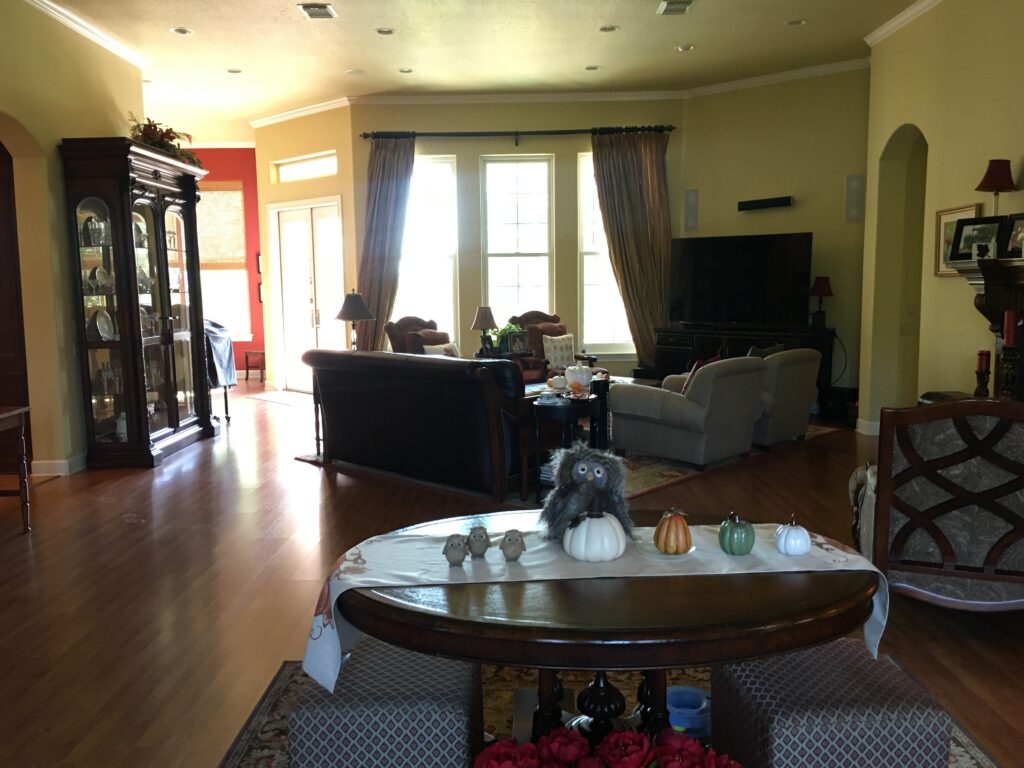
Above: Before Renovations
Next is the updated living room with bare windows.
Below is a photo of the updated dining room, where we simply moved the draperies from one room to another. They were made of a nice silk with substantial, decorative hardware so it made sense to repurpose these.
Here are the views from the back of the house.You can see why we didn’t want to cover that up!
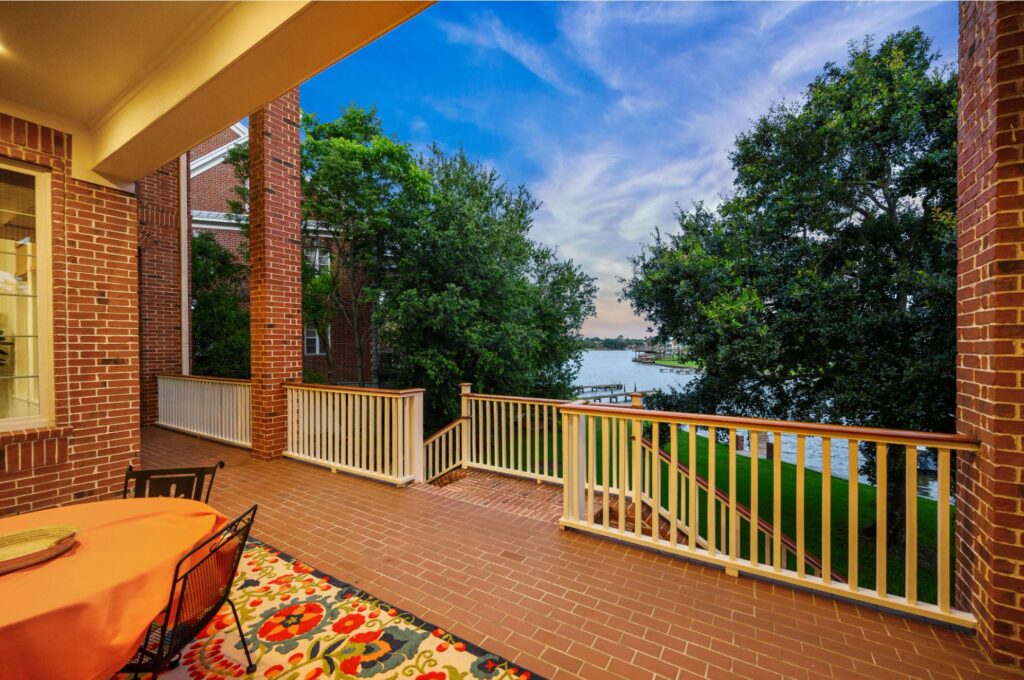
Back Patio View
Fast forward through the years and our window treatments became more streamlined. The huge advances in functioning window treatments such as blinds and shades and the ability to automate them worked well with transitional and modern décor. Huge windows often meant people didn’t want to cover their glass. However, when they moved in, they discovered they were living in a fishbowl so window treatments were needed. We started selecting more discrete shades and lots of sheers. These can stack back against the walls or disappear into a tiny cartridge so you have the appearance of no treatments during the day and the option of privacy and light control at night.
We did two major renovations for a fabulous client over a few years. The first house, a grand, traditional Southern style home in River Oaks looked best with classic fabrics. Silk panels on top of traditional damask wallpaper worked beautifully with the salvaged crystal chandelier and the refinished vintage dining suite. We added a modern piece of art on one wall to keep it from feeling stuffy.
The couple’s new home was a completely different style. We were able to reuse nearly all of the furniture, rugs and art, just updating a few areas. Modern touches like this very tall atrium, required some window treatments. Standard drapes would not work in many of the spaces so we opted for simple, clean, motorized shades that nearly disappear from sight.
Despite a trend toward more streamlined window treatments, we still do lots of complex designs. We layered silk embroidered drapery panels over woven wood shades in my bedroom. Jon and I both love them. They soften the room and provide a restful vibe. My husband Jon really surprised me when we first saw them and commented on them. He said they made the room more romantic. He is not the first man to observe that. Once, when I added blackout lined draperies to a nursery in the Heights, the husband told me it was his favorite room in the house, mainly because it was dark, quiet and cozy.
In my dining room we combined embroidered sheers with solid silk panels on the same rod. It’s hard to see in this photo but we used a simple French pleat for the sheers while we festooned the panels with dressmaker details like goblet pleats and a button accent similar to the example in the close-up photo further below.
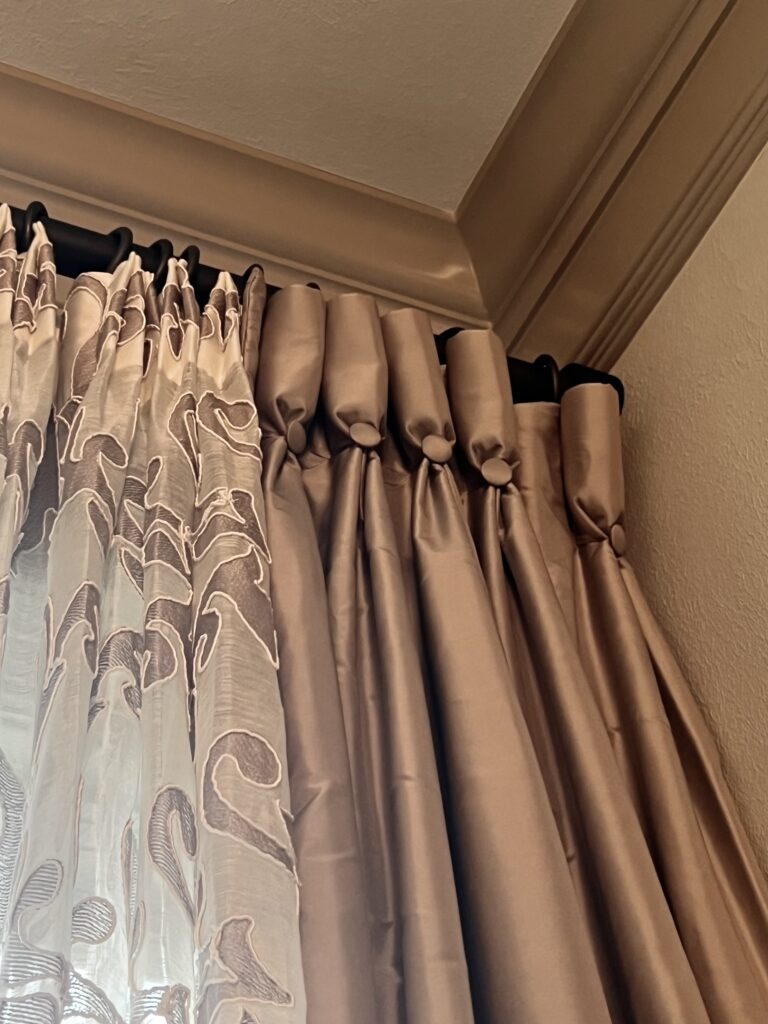
Goblet pleats and button accents
We did lots of layers with fabulous ready-made pillows with semi-custom and custom bedding and drapes in this wonderful townhome.
Zooming in, a bold decorative tape really added pizzazz to the shams as shown below.
This colorful home has been featured twice in the media and we’ve had a few clients call us for design work simply for the way we used color in this project. These articles ran in the Houston Chronicle. You may need a subscription to read the full articles.
- “Young lawyer uses rainbow of color in her Hyde Park townhome,” by Diane Cowen on 3/17/2022
- “Here are the home design trends you can expect to see in 2022,” by Diane Cowen on 12/23/202
From trim to fringe and bold to discrete, fabric and patterns continue to inspire me. Until next time, find your inspiration or call us and we’ll help you discover it.
